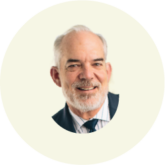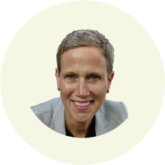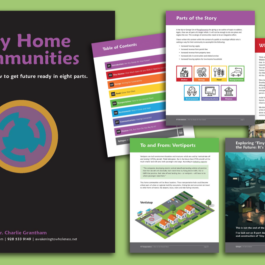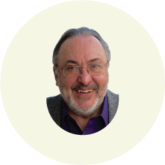What are the top 10 trends for the next ten years? Download the report here.

For 35 years of my 42-year career, I have been in the President/CEO role. Every position expected me to develop strategies, but the time I spent “being strategic” varied significantly. Here’s my evolution, and why foresight is a technique I recommend to all executives.
Startup - Planning for Months
My first president’s role was at a start-up economic development organization in Michigan. I walked into the office the first day and found a list of board members, a phone, and a copy of the budget! My time was spent learning how to run an organization. My planning horizon was, at most, the next two months.
Like the survey respondents in my colleagues Rebecca Ryan and Charlie Grantham’s blog “The Strategy Paradox”, my work was task-focused. Yes, I was the CEO. Yes, I was responsible for strategy. But we were in startup mode. I was learning a lot and hitting goals and it was all very exciting! I was proving to the board that their faith in a 26-year-old was well placed, that the time that they had invested to give me an on-the-job MBA was not wasted. They expected me to succeed and did everything in their power to set me up for success. That was very rewarding!
Placemaking - Planning for Years
By the time I took my next President/CEO roles – at the Greater Fort Wayne Chamber, and then the Greenville, SC Chamber – thinking about the future became a more important part of my work. I had learned that allocating resources for projects that had more than a one-year life cycle would require longer-term planning to set the stage for budget allocations. I was learning how to think in five-year cycles because that was the fundraising cycle.
Planning for the next five years gave me permission to put projects in place that would take longer to accomplish. The work changed from growing the economy to building a dynamic future in the community. It became clear to me that improving the place (what is now called “placemaking”) made our community more attractive to more people which in turn made us more attractive to companies. We could achieve community and economic goals by becoming a better place to live.
And that brought on frustration about the way we looked into the future.
Like most CEOs, I had used traditional strategic planning tools for many years - SWOT analysis, 5-year look-backs to see what worked and didn’t work, eliminating the unnecessary, adding some responses to new short term trends, raising the funds for the plan, and then implementing the plan - only to repeat the process in a few years. We got a lot accomplished, but I found it challenging to accomplish long-term catalytic change. Using past results as the sole basis for planning the future didn’t give me a stable platform for the future. I needed better tools to help me visualize what the future could be and a vision that could serve as a rallying point for employees and board members.
Transformation - Planning for Generations
Finally, as president of the Greater Omaha Chamber, I went searching for an alternative. Rebecca remembers me saying, “I need something different. I can’t do another 5-year plan in the same way. It’s not going to get us where we need to go.”
Strategic foresight allowed us to identify a compelling future that people got excited about. We were able to use our preferred future as the basis for making task-focused decisions today. We counted on industry-focused news and insights to respond in real-time to disruptions that might change our preferred future path. Our first five-year plan - which was based on our preferred 2040 future - focused on placemaking, talent, diversity. Not your standard economic development strategy expectations! But our investors and board got it! They saw the connection between what we wanted our future to be and what the organization had to accomplish each year to get there. We had given them a future context for decisions being made today.
I saw other transformations. By linking futures thinking with activities we were already engaged in, the Chamber was spending more time collectively thinking about the future, which meant that I was leading a group of staff, board leaders, and community partners whose first question was about our future plans. My time became much more focused on the strategy needed to meet milestones to accomplish the future. And since our short-term actions were all tied to our long-term aspirations, we were hitting our quarterly and annual numbers too.
In hindsight, the time we invested doing strategic foresight - which was considerable - saved us a lot of time down the line. When people know what the vision is, they can organically align their work to it.
Tomorrow's CEOs
I wonder sometimes, what else could have been accomplished in my career had I known how to use strategic foresight earlier? I don't think I became more capable of strategic foresight later in my career. This isn’t about age…it is about perspective.
Times are remarkably different today than when I started my career. I can imagine strategic foresight as one of the skills my first board of directors would want me to learn. Any leader can learn these skills to help their organization and community thrive.
Maybe it could help yours too.
If you'd like to talk about using strategic foresight in your community or company, or if you'd like to learn more about the “Think Like a Futurist” training we’re developing for executives and boards, email me or schedule some time in my calendar.
If you enjoyed this post, please subscribe to our newsletter.

David G. Brown
This guy. David G. Brown led the Greater Omaha Chamber for two decades, was the driving force behind ACCE’s Horizon effort, and hired our team for Greater Omaha 2040 - which has become a North Star impacting everything from Omaha’s riverfront development to a new downtown and streetcar plan. David has now flipped from being a client to a team member! As a Lead Consultant, he providing guidance, foresight, and insight to clients committed to more ambitious, equitable, and prosperous futures. Watch David's Q&A on how NGC helps organizations prepare for the future using Strategic Foresight. Book a meeting with David and be sure to ask him about bourbon, cigars, the Huskers…or Opera.
Yasemin Arikan Promoted to Director of Futures Research
NEXT Generation Consulting (NGC) announced the promotion of Yasemin Arikan to Director of Futures Research. Arikan will lead the company’s efforts to...
Is Your Housing Market Ready for Your Future?
One of the biggest problems facing many cities and towns is inadequate housing. This problem is most acute for seniors, veterans with disabilities, and low-income groups ...
Three Things Martha Stewart Gets Right About Return to Office (RTO)
The original influencer and the person who invented the "Home" retail category, Martha Stewart, became the latest CEO to tell employees to get back to the office five day...








